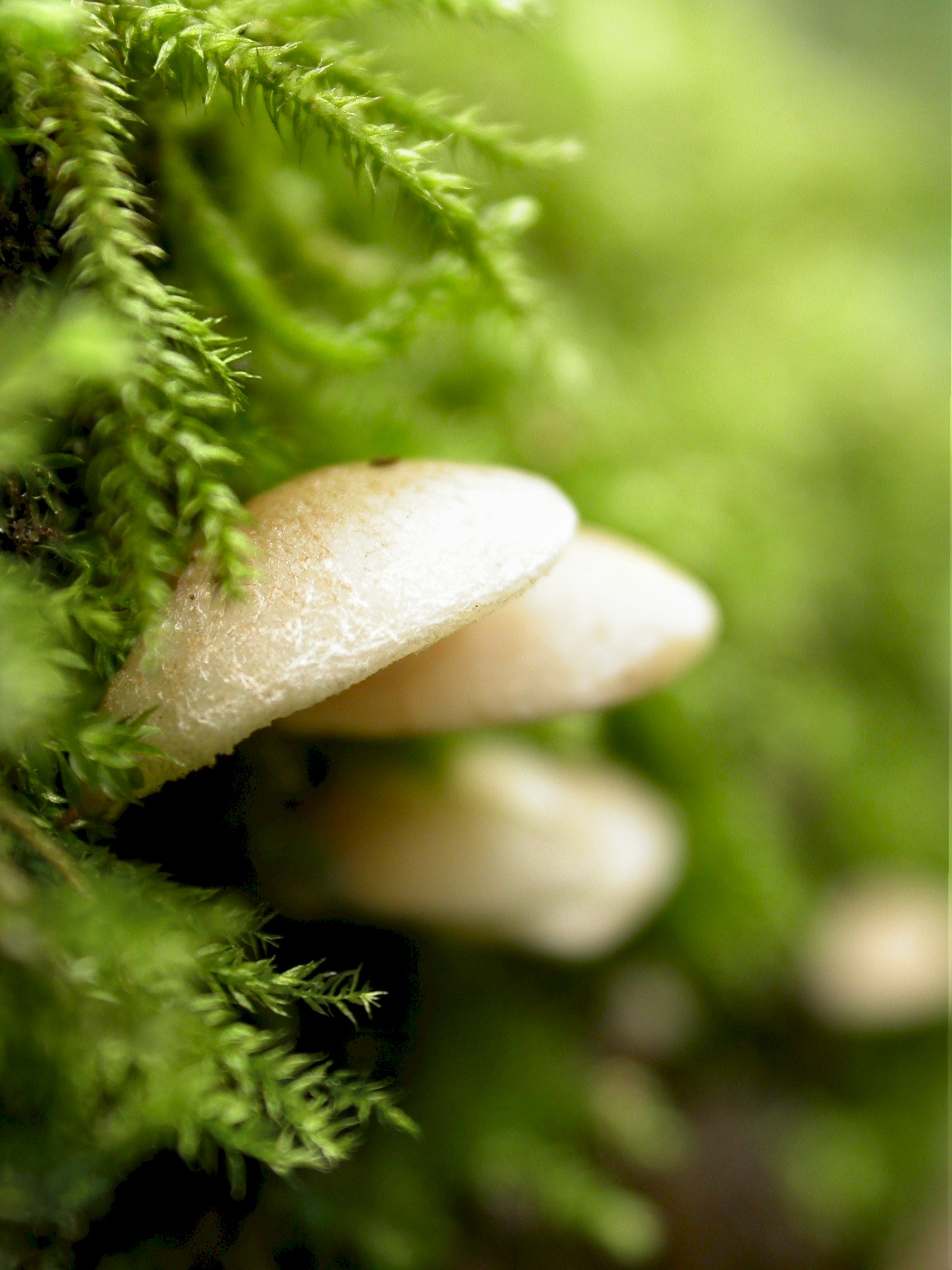FUNGAL FRIENDS GROUP NEWS |
(Member of the Fungus Conservation Trust - Registered Charity No. 1118651) |
ID WORKSHOP |
1. Working through a Crepidotus key After finding a couple of Crepidotus specimens at Mere Sands Wood on a cold but clear day I decided that a recently published key in the ABFG's Forayer by Jack Marriot may come in useful. Keys are not easy to use if one is lacking in the knowledge of all the terminology with words such as subcapitate, subulate and amygdaliform giving even the most ardent enthusiast a severe headache. Sometimes what is globose, subglobose, ellipsoid or sub-ellipsoid is even open to slight interpretation and adds to the overall problem of making any progress. What the author of this key has done has kept things simple to a certain extent and so the user can make some headway before seeking out the latin dictionary or if desperate, the suicide pills. So after working through the initial part of the key without resorting to microscopy the following factors were decided upon. A white largish cap, the substrate on which the specimen was growing was certainly woody debris and the spores are oblong to ellipsoid (see fig 1 below). So far so good. Fig 1 Next came a question of spore size. 7 microns or less or 9 microns or more. More hunching up and squinting! Well definitely several spores were over 9 microns so Crepidotus variabilis (a common species and one I was expecting this to be) is passed by. It was noted also that the spores were slightly verrucose (warted) at this stage - an important clue perhaps? So then, we get to the decision of whether clamps are present or absent? Well, first things first - where do I look? A brief scan of the internet revealed that some hyphal structures in the cap cuticle will indeed have these kind of curious connections. It is an intricate process that causes these growths and quite simply explained by the Forest Pathology website in their fungi section - http://www.forestpathology.org/fungi.html. Saves me getting tongue tied! A sliver of the said cap cuticle was taken and slightly stained with Congo Red and lo and behold what I deem to be a clamp connection (see fig 2). Question answered and on we go. Fig 2 A final debate and after a few brief steps and a lot of pondering a conclusion was reached that Crepidotus luteolus was the species under scrutiny. I still had thoughts that perhaps the spore size had misled me and that Crepidotus variabilis was in fact the specimen I had found but further web investigations have confirmed my final conclusion (hopefully). In addition to the above, at a later date, the key was used to determine the common Crepidotus cesatii (see fig 3). The average spore size came out at 8.8µ * 6.8µ with a sub-globose shape. Minute spines were just discenible on the spores. The distinct pinkish colour of the gills and spore print make this species similar to Crepidotus variabilis but this latter species has cylindrically ellipsoid spores which are smaller overall. Clamp connections were present. Fig 3 On the same date Crepidotus mollis was also scrutinised although this species is quite recognisable without microscopic investigation. The gelatinous layer on the cap that can be peeled away is quite distinctive but nonetheless a look at the spores was taken so as to make relative comparisons. Here we had an average size of 9.35µ * 5.91µ with the spores ovoid-ellipsoid in shape, smooth and having slightly thickened walls (see fig 4). Clamp connections were absent. Fig 4 A shot of a young Crepidotus mollis from my personal gallery is shown (see fig 5).
Fig 5 The main point of this short detective tale is that it certainly got me looking further into the fungal make-up and learning new identification techniques that all help build up a bigger and better understanding. We are all at different stages and all of us have various literature to access and can only do what we do given these two factors. I hope though that this brief piece somewhat banishes the myth behind microscopy and that given the right pointers and a bit of luck we can all eventually enhance our knowledge. It takes time but slowly and steadily is the key. Talking of keys - well why not type in 'fungi keys' in a search engine and see what comes up. Take a key and go as far as you can and see what equipment or literature you need to get over the first hindering hurdle. Worth thinking about don't you think?
|
